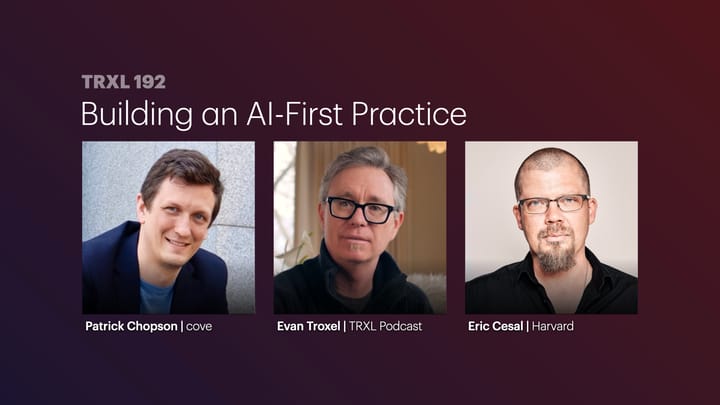The Future of AEC Software, Part 1
A Framework for Data
A well written, easy to understand primer about the Future AEC Software Specification has been posted on LinkedIn by Aaron Perry. He was recently on the podcast, along with Andy Watts, to expand upon this subject.
The premise:
The premise is simple: every time we import and export between software using proprietary file formats and structures, it is lose - lose. We're losing geometry, data, time, energy, sanity.
In AEC, some design firms have just accepted the path of least resistance and avoid file exchanges as much as possible by accepting a single tool to do a little bit of everything in an average way. A few of the larger firms use whatever the best tools for the job are. However, they are paying for it by building custom workflows, buying talent, and building conversion software. But that doesn't change the fundamental problem. The data is still 'locked' and only readable to a proprietary file type.
The current state:
For absolute clarity, we have cloud-based file hosting systems today, which don't expose a granular data parameter level for each entity and component. Working outside file formats enables a more diverse audience of stakeholders to access, author and modify parameters concurrently, only interacting with the data they need, not a whole model. Collaborators can benefit from robust git-style co-authoring and commits of information with full permissions, audit trail and acceptance process.
Today, our tools connect through intensive prep, cleaning, exporting, and importing, even within tools made by the same vendor.
Some design firms avoid file exchanges as much as possible by accepting a single tool.
The outcome of the proposed shift:
Moving away from file formats and having the centralised data framework enables local data to be committed to the centralised web data, allowing an entire supply chain to access different aspects of the whole project without losing geometry, data or time associated with file type translations.
This is part 1 in a 10-part series from Aaron of which I intend to continue to share here as the series progresses. Read the article, learn about the challenges and the proposed solution, and get involved here.
For more conversations around these topics with the author and others, check out these related TRXL podcast episodes:
- 079: ‘Changing the Relationship’, with Greg Schleusner
- 133: ‘The (Chaotic) State of the AEC Tech Industry, Part 1’, with Martyn Day
- 134: ‘The (Chaotic) State of the AEC Tech Industry, Part 2’, with Martyn Day
- 143: ‘The Future AEC Software Specification’, with Andy Watts and Aaron Perry
📰
Take a load off. Get a weekly-ish newsletter digest of AEC/tech stories sent directly to your inbox. Subscribe here.



